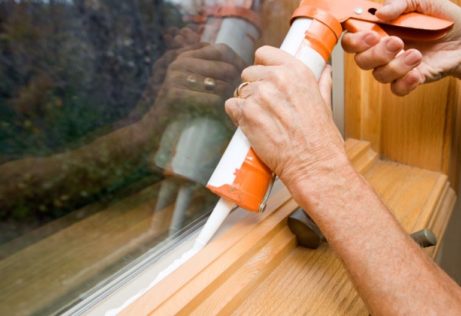Weatherization

Weatherization can improve energy efficiency within your home, resulting in lower utilities and a positive impact on the environment. To weatherize your home means to make infrastructural changes that keeps your home insulated, blocks outside air flow, and maintains energy-dependent appliances.
The two biggest sources of a home’s energy usage are it’s HVAC system and hot water heater. Next in line are lighting and appliances. To make sure these systems run smoothly and efficiently you can make small weatherization changes that will greatly increase their life span.
Some of the most useful weatherization changes include: air sealing with caulk, weather-stripping windows and doors, installing a water heater blanket, changing all light bulbs to LED’s, and insulating outlets.
There are several other modes of weatherizing, but you can’t assume all of them will be appropriate for your home! Many factors influence energy efficiency in a home, so it is best to have an energy audit completed before making any weatherization changes. Schedule to have an energy audit completed or check out one of our DIY Energy Audit Kit’s!
Weatherization Tips:
- Air leaks allow warm air into the home during warmer months and cooler air into the home during colder months. This makes the HVAC system work harder to heat/cool your home than it should, costing you extra money and making you uncomfortable. Fight this problem by air sealing your windows and doors!
- Air leaks are most commonly found where two building materials meet, such as windows, doors, chimneys, or outdoor water faucets.
- You can also air seal with weather-strips! Weather-strips can seal air leaks around movable joints, such as windows and doors.
- Installing a low-flow shower head can reduce hot water heating costs by using and wasting less hot water in your home.
- For maximum energy efficiency, install shower heads with low flow rates as low as 2.0 gallons per minute at water pressure of 80 pounds per square inch.
- LED light bulbs are effective energy savers because they light your home using the same amount of light for much less money!
- According to Energy Star, replacing five of your most used light bulbs with LEDS can save you $75 a year.
- Install a water heater blanket to insulate your water heater, allowing it to work more effectively for less money!
- Install foam outlet gaskets to insulate your outlets!
- Arrange furniture in your home so that vents are not blocked and can heat/cool your home as effectively as possible.
- Be sure to have regular maintenance performed on HVAC system and insulation every year.
- Seal duct work to prevent air leaks.
- Insulate attic hatch/pull down stairs.
- Install storm doors or double panes. A cheap alternative is to install insulation film over windows.
- Install draft guards at the bottom of doors to prevent air drafts. There are also several DIY options for making draft guards using common household materials.
- Come to a Bluegrass Greensource Home Energy Workshop to receive some free weatherization tools and to learn how to use them!
Helpful videos:
Reference these videos for tips on using caulking, weather striping, and door sweeps to seal doors and windows; sealing outlets; and carrying out other weatherization tasks in your home.